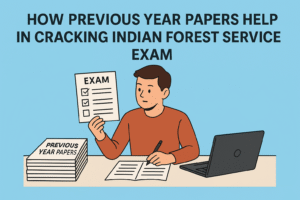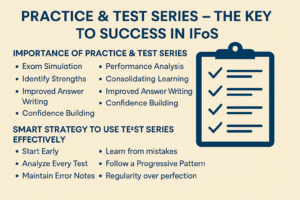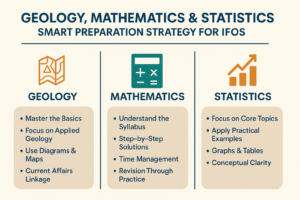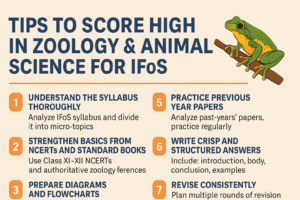The Public Administration (Pub Ad) optional has consistently been one of the most popular choices among UPSC Civil Services aspirants. Known for its syllabus overlap with General Studies, concise content, and practical application in governance and administration, Public Administration is regarded as one of the most rewarding optional subjects for Mains.
This guide provides a complete strategy, preparation tips, and recommended booklist to help you score high in Public Administration optional.
WHY CHOOSE PUBLIC ADMINISTRATION OPTIONAL?
Overlap with GS Papers
GS-II (Governance, Constitution, Polity, Social Justice, International Relations).
GS-IV (Ethics, Integrity, and Aptitude).
Short and Manageable Syllabus
Compared to History, Geography, and PSIR, the syllabus is compact.
Scoring Potential
With conceptual clarity and effective presentation, scoring 270–320+ is achievable.
Relevance in Interview
Questions on governance, reforms, administration, and public policy often come up in UPSC Personality Test.
Practical Utility
Knowledge of Public Administration is useful for future administrators (IAS, IPS, IFS officers) in real service.
SYLLABUS OVERVIEW
Public Administration consists of two papers:
PAPER I – Administrative Theory
Basic concepts: Administration, Organization, Management.
Principles of Organization: Hierarchy, Unity of Command, Delegation, Leadership.
Administrative thinkers: Woodrow Wilson, Taylor, Fayol, Gulick, Simon, Weber, Barnard.
Accountability and Control, Administrative Law.
Personnel Administration: Recruitment, Training, Promotion, Discipline.
Comparative Public Administration, Development Administration.
Public Policy, Financial Administration.
PAPER II – Indian Administration
Evolution of Indian Administration.
Constitutional Framework and Governance.
Union Government: President, PM, Cabinet Secretariat, Ministries.
State Government: Governor, Chief Minister, Council of Ministers.
District and Local Administration: Panchayati Raj, Urban Governance.
Public Sector, Regulatory Bodies, NGOs.
Administrative Reforms, Welfare Administration.
Law and Order Administration, Police Reforms.
Financial Administration: Budget, CAG, Finance Commission.
COMPLETE STRATEGY FOR PUBLIC ADMINISTRATION OPTIONAL
1. Build Conceptual Clarity
Focus on thinkers and theories in Paper I.
Relate concepts to real-life administration and governance issues.
2. Link with Current Affairs
Use examples from recent policies, schemes, governance issues, NITI Aayog reports, ARC reports, and Supreme Court judgments.
3. Answer Writing Practice
Structure answers using Introduction – Body – Conclusion.
Quote thinkers, reports, and case studies wherever possible.
Add flowcharts, diagrams, and bullet points for better presentation.
4. Balance Paper I and II
Paper I is more theoretical; Paper II is dynamic and India-specific.
Relating Paper I theories to Paper II case studies fetches higher marks.
5. Time Management
Complete Paper I in the first 3 months.
Move to Paper II with focus on current examples and reports.
Keep at least 3 months for revision + answer writing practice.
BOOKLIST FOR PUBLIC ADMINISTRATION OPTIONAL
For PAPER I – Administrative Theory
Public Administration – By M. Laxmikanth (basic coverage).
New Horizons of Public Administration – By Mohit Bhattacharya (must-read for concepts).
Administrative Thinkers – By Prasad & Prasad (for thinkers).
Public Administration – By Nicholas Henry (for comparative perspective).
For PAPER II – Indian Administration
Indian Administration – By Rajni Goyal & Arora.
Public Administration in India – By S. R. Maheshwari.
Reports – 2nd ARC Reports, Punchhi Commission, Sarkaria Commission, NITI Aayog documents.
Economic Survey & Current Affairs Sources (The Hindu, Indian Express, PIB).
Additional Sources
IGNOU BA/MA Public Administration Notes (for simplified understanding).
Vision IAS / Vajiram / Insights IAS Notes (for value addition).
TIPS TO SCORE HIGH IN PUBLIC ADMINISTRATION
Use Thinkers in Answers: Quote thinkers like Woodrow Wilson, Max Weber, Simon in relevant contexts.
ARC Reports: Always include 2nd ARC recommendations in Paper II answers.
Diagrams & Flowcharts: Visual presentation improves readability.
Balance Theory with Examples: Relating theory to Indian Administration fetches higher marks.
Regular Answer Writing: Practice 3–4 answers daily, join test series.
FAQS ON PUBLIC ADMINISTRATION OPTIONAL
Q1. IS PUBLIC ADMINISTRATION A SCORING OPTIONAL?
Yes, with proper conceptual clarity and updated examples, aspirants regularly score 270+ in Public Administration.
Q2. IS PUBLIC ADMINISTRATION OPTIONAL GOOD FOR ENGINEERS?
Yes. Even aspirants from technical backgrounds prefer it due to short syllabus and GS overlap.
Q3. HOW MUCH TIME IS NEEDED TO COMPLETE PUBLIC ADMINISTRATION OPTIONAL?
With focused study, it can be completed in 4–5 months along with regular answer writing.
Q4. WHICH BOOK IS BEST FOR BEGINNERS IN PUBLIC ADMINISTRATION?
Start with M. Laxmikanth’s Public Administration for basics, then move to Mohit Bhattacharya for deeper understanding.
Q5. HOW TO INTEGRATE CURRENT AFFAIRS WITH PUBLIC ADMINISTRATION?
Use ARC reports, Supreme Court judgments, government schemes, and contemporary issues in Paper II answers.
Q6. WHAT IS THE IDEAL STRATEGY TO BALANCE PAPER I AND II?
Study Paper I theories first, then apply them in Paper II answers using Indian governance examples.
FINAL WORDS
The Public Administration optional offers a unique blend of theory and practice. With a compact syllabus, overlap with GS, and high scoring potential, it remains one of the best choices for UPSC aspirants. A well-planned strategy with the right booklist, ARC reports, and answer writing practice can help aspirants achieve an edge in Mains and secure a top rank in UPSC.










